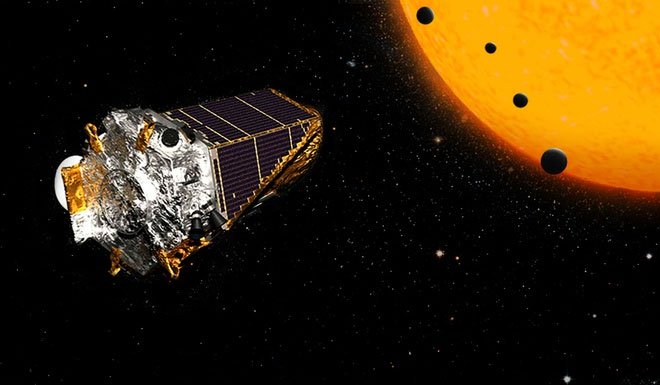Up to 6 billion 'Earths' are wandering in outer space
There may be as many as 36 alien races living in our galaxy, so how many planets are equivalent to Earth?
In mid-June, an extremely bold announcement spread quickly on the Internet, estimating that there are 36 alien civilizations living in our own Milky Way galaxy.

The Kepler telescope has now been 'retired' by NASA in 2018. (Image: NASA).
It is the appearance of mankind that is evidence that there is definitely life on other planets in the galaxy. The probability of the Earth being a one-of-a-kind planet is almost zero.
The research done by scientists is based on the ability of life to develop on planets similar to the Earth. However, in another study, the number of planets likely to resemble Earth is even greater than we thought.
According to The Astronomical Journal, thanks to NASA's Kepler telescope, Canadian astronomers have stated that there could be up to 6 billion planets like where humans are.
To be classified as an Earth-like planet, the planets must converge all the necessary elements such as rocky mountains, the equivalent size and orbiting a star like the Sun (also known as the stars). G-star). Not only that, the orbits of those planets must be precisely positioned to support the optimal existence of liquid and life.
According to the scientists' announcement, the Milky Way is home to 400 billion stars, 7% of which are G-stars.
Thanks to the Kepler telescope, the proportion of an Earth-like planet that exists around a given star has been determined to fall to about 18%, equivalent to 6 billion planets.

Planet KIC-7340288 b (green) is 1.5 times the size of Earth and takes 142.5 days to orbit all the way. (Photo: Michelle Kunimoto).
'My calculations set the limit of 0.18 Earth-like planets per G-star,' says Michelle Kunimoto, co-author of the research at British Columbia University (UBC) Canada.
In February 2020, UBC revealed the results of Kunimoto, 17 exoplanets found, including a star the size of Earth suitable for life called KIC-7340288 b, However, this planet is 1,000 light-years away.
This is considered a really important finding, particularly in the Kepler data found so far, only 15 planets in the galaxy have been confirmed to exist in habitats.
- For the first time, we can see livestream images from outer space
- Why are astronauts forbidden to drink in outer space?
- The environment in outer space may not affect reproduction
- China aspires to create genetically modified seeds in outer space
- Why can't trash be dumped into space?
- How do astronauts brew coffee in outer space?
- NASA research on changes in space
- Extreme weather on outer space planets
- Earth and Moon viewed from a distance of 1.4 billion km
- Vivid images of space astronauts
- Astronaut about to have a 'happy' outfit
- Why are there so many gas clouds migrating from the Milky Way?
 Van Allen's belt and evidence that the Apollo 11 mission to the Moon was myth
Van Allen's belt and evidence that the Apollo 11 mission to the Moon was myth The levels of civilization in the universe (Kardashev scale)
The levels of civilization in the universe (Kardashev scale) Today Mars, the sun and the Earth are aligned
Today Mars, the sun and the Earth are aligned The Amazon owner announced a secret plan to build a space base for thousands of people
The Amazon owner announced a secret plan to build a space base for thousands of people